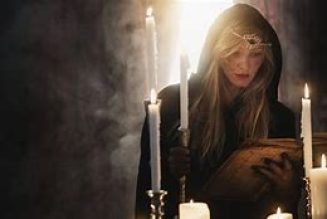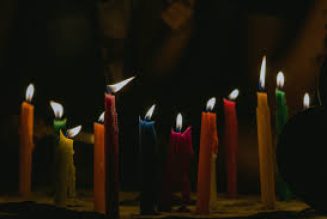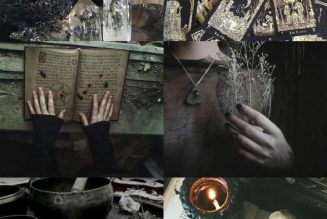A handfasting is a wedding or betrothal ceremony, and to be handfasted is equivalent to being married or betrothed.
Before we get into the details, let’s back up a bit and have a quick history lesson.
In most of pre-Christain Europe, weddings were fairly straightforward affairs, and this was especially true for northern Europe and Celtic lands.
Two families came together and they worked out a deal on land ownership and any trading of goods.
Then, the couple would exchange gifts, clasp hands, and make oaths of loyalty to each other.
Afterward their families and the community they lived in would throw a party and have a feast.
Going to the trouble of a full religious ceremony officiated by a Druid (or someone similar) was typically reserved for people of very high social status.
For most people the transition from single to married was a do-it-yourself affair, with the couple’s community acting as witnesses.
As Christianity began to spread across Europe, the new Church lacked the resources to have a clergyman in every rural village and hamlet.
As such, the Church would send circuit priests to travel to out-of-the-way parishes during the warmer months.
Obviously, this presented a problem to families who needed to make an alliance with another family or clan.
It’s also difficult to ask young people in love to wait so long before they can make a home together.
Especially if the young woman was already pregnant! Governments had a similar problem:
it was too difficult to provide a judge or magistrate to every little village, let alone manage all the paperwork required for marriage licenses at a time when everything was handwritten on parchment.
So, the folk looked back to the traditions of their grandparents and found a compromise. T
he couple would self-marry in the old style when it was convenient for the community.
The union would later be formally blessed by the church when the circuit priest came to visit.
In the Middle Ages, handfasting-type rituals became popularly used as betrothal rituals.
In some parts of Europe, such as Scotland, the word “handfasting” was used to say that a couple was engaged.
It was more common to hear that a couple was “handfasted” than “betrothed.”
These types of self-uniting marriage traditions lasted well into the colonial era, when settlers in the New World faced difficulties due to long distances and lack of resources.
It was only a couple of hundred years ago that nations began to pass legislation requiring couples to be legally wed via a specific set of rules.
In fact, in some parts of the world, self-uniting ceremonies are still perfectly valid and legal.
As modern Paganism began to truly grow in the early-to-mid 20th century, Pagans sought marriage rituals that had historical significance without strong ties to other religions.
Two fit the bill: the tying of hands in the handfasting tradition, and the jumping of the broom.








